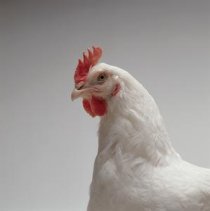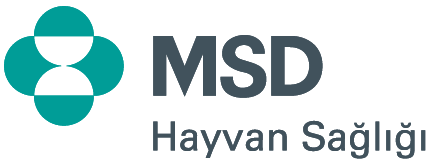Yayınlar
Kümes hayvanlarında Salmonella enfeksiyonlarının kontrolü hakkında yayınlar. Nobilis Salenvac T, Nobilis SG 9R ve Salmonella kontrolü ve epidemiyolojisi hakkındaki yayınlar:
Nobilis Salenvac (T)
N Chanter, K Jackson, C Pugh, B Sheehan (Poster, Mayıs 2006)
13. Uluslararası Salmonella ve Salmonelloz Sempozyumu, 10-12 Mayıs 2006, St Malo, Fransa
Yumurtacı tavukların inaktif Salmonella aşısıyla aşılanması yumurtalarda Salmonella çoğalmasını azaltır (pdf 46 Kb)
P Dupe, C Belloc, X Mahler, P Paulet (Poster, Mayıs 2006)
13. Uluslararası Salmonella ve Salmonellozis Sempozyumu, 10-12 Mayıs 2006, St Malo, Fransa
Yumurtacı tavuklarda Nobilis Salenvac T aşı uygulamasının değerlendirilmesi (pdf 52kb)
A Feberwee, T.S de Vries, A.R.W Elbers, W.A. de Jong (2000)
Hollanda’da broiler damızlık sürülerinde yürütülen Salmonella enteritidis aşılaması saha denemesinin sonuçları
Kanatlı Hastalıkları 44:249-255
Özeti okumak için tıklayın
A Feberwee, T.S de Vries, E.G Hartman, J.J de Wit, A.R.W Elbers, W.A. de Jong (2001)
Hollanda’da ticari yumurtacı sürülerin canlı bir Salmonella gallinarum 9R suşunu esas alan bir aşıyla Salmonella enteritidis’e karşı aşılanması: Serolojik Salmonella testlerinin etkisi, güvenliği ve performansının değerlendirmesi.
Kanatlı Hastalıkları 45:83-91.
Özeti okumak için tıklayın
Methner U. ve Steinbach G. (1997)
Salmonella enteritidis’li civcivlerin oral enfeksiyonuna karşı maternal Salmonella antikorlarının etkisi.
Berliner ve Munchener Tierarztliche Wochenschrift 110:373-377
Oostenbach P.J.G. (1998)
Salenvac’ın ve diğer önlemlerin Salmonella kontrol programının unsurları olarak kullanılması üzerine saha denemesi
Hayvanlarda Salmonella enfeksiyonlarına karşı Aşılama ve Rekabetçi Dışlama Hakkında WHO Konsültasyonu, Jena, Almanya, 4-8 Ekim
Oostenbach P.J.G. (2000)
Kümes hayvanlarında Salmonella’yı kontrol etmek için aşı kullanımı üzerine saha denemesi
Flaman Veteriner Epidemiyolojisi ve Ekonomisi Derneği 8. Yıllık Toplantısı, Brüksel, Belçika, 26 Ekim
Oostenbach P.J.G. (2001)
Kümes hayvanlarında Salmonella’yı kontrol etmek için inaktif aşı Salenvac ve Flavomycin’in kullanımı
Salmonella Sempozyumu, Polanica Zdroj, Polonya
This paper discusses the field experience obtained after the implementation of Salenvac vaccination in layers in the United Kingdom and in broiler breeders in The Netherlands. Based on the experience in both countries it is concluded that the use of the inactivated Salmonella Enteritidis vaccine Salenvac clearly reduced the spread of Salmonella.
The use of Flavomycin as part of a Salmonella control program is discussed and results of trial data presented
Tenk I., Gyorváry I., Erdei P., Szabó Z., Kostyák Á. and Mátray D. (2000)
Salmonella enteritidis’e karşı bir aşının (Salenvac) damızlık hindi sürülerinde Salmonella’nın saçılması üzerindeki etkisi.
Macaristan Veterinerlik Bülteni 122:737-741
Salmonella shedding in a total of 36 416 BUT breeding turkeys was studied following intramuscular vaccination with Salenvac in two production cycles. Flock A received a 1ml dose twice i.m. at week 20 and 27. Flock B received a 0.5 ml dose of the vaccine three times at week 8, 20 and 27.
Before vaccination samples were taken because of production problems and10.6% were Salmonella positive. Eggs showed a high rate of Salmonella contamination. Seven out of 11 strains serotyped were identified as S. Enteritidis.
Vaccinated period: No Salmonella was isolated from day-old or growing poults. In flock B S. Enteritidis was isolated at week 52.
The ELISA test at week 54 indicated low serum antibody titres (positive=2, negative=201 and doubtful=74 out of 277 animals). Following the vaccination procedures Salmonella-associated losses and condemnations were reduced to one third of the level observed prior to vaccination. After vaccination the hatching performance improved, the quality of the day old poults was better and performance figures were higher.
Woodward M.J, Gettinby G, Breslin M.F, Corkish J.D and Houghton S (2002)
Salmonella enterica’nın alt türü Enterica serotipi Enteritidis’e karşı demir kısıtlamalı bakteri aşısı olan Salenvac’ın yumurtacı tavuklarda etkisi
Kanatlı Patolojisi 31:363-392
The protective effect of two vaccination programs using Salenvac was verified in laying birds. Vaccination was intramuscular at 1 day old and again at 4 weeks of age (V2), or at 1 day and 4 weeks with a third dose at 18 weeks of age. (V3). At 8, 17, 23, 30 and 59 weeks of age, challenge S. Enteritidis (5 to 7,5) X 107 colony forming units was given intravenously . For all age groups, both vaccination programs reduced significantly the number of tissues and faecal samples that were culture positive for the challenge strain. For laying birds, fewer eggs (p<0.001) were culture positive for S. Enteritidis after challenge from vaccinated laying birds (56/439 batches of eggs) than unvaccinated birds (99/252 batches). The data gives compelling proof that the vaccine is efficacious and may contribute to the reduction of layer infection and egg contamination.
Nobilis SG 9R
Feberwee A., Hartman E.G., Wit de J.J., and Vries de T.S. (2000)
Salmonella gallinarum 9R aşı suşunun saha koşullarında saçılması
Avian Diseases (Kanatlı Hastalıkları) 45:1024-1029
A live vaccine based on an attenuated Salmonella Gallinarum 9R strain is in use in a Salmonella Enteritidis control program in commercial layer flocks in The Netherlands. In a field study the potential spread of the vaccine strain from vaccinated flocks to non-vaccinated flocks was studied. No evidence was found for the fecal spread of the vaccine strain.
T.Z. Tan, B. Nay, J.M. Bricker , H. Hughes, F. Sterner and R. Hein
Atenüye Salmonella gallinarum Canlı Aşısı, Tavuklarda Salmonella enteritidis Enfeksiyonuna karşı Uzun Vadeli Koruma sağlar.
T.Z. Tan , B. Nay , J.M. Bricker , M. Witvliet , H. Hughes F. Sterner and R. Hein.
Yumurtacı Tavuklarda Atenüye Salmonella gallinarum Canlı Aşısının Güvenlik Araştırmaları ve Risk Analizi (1)
Maarten Witvliet,Tanja Mols-Vorstermans, Luc Wijnhoven
Tavukların S. enteritidis’e karşı S. gallinarum 9R suşuyla aşılanması
Salmonella Kontrolü
P.A Barrow, G.C Mead, C. Wray, M. Duchet-Suchaux (2003)
Insanlarda gıda zehirlenmesine yol açan salmonella’nın kümes hayvanlarında kontrolü – biyolojik seçenekler
World’s Poultry Science Journal (Dünya Kanatlı Bilimleri Bülteni) 59:373-382
The high cost of rearing pathogen-free poultry, coupled with increases in importation from non-European countries where hygienic measures may be less stringent indicates that biological approaches to control of infection with food-borne pathogens will continue to be important. The major measures are dealt with in this review, together with the positive and negative aspects of these approaches. They include antibiotic therapy and prophylaxis, competitive exclusion using intestinal flora preparations, live and killed vaccines and the increasing interest in exploiting natural genetic resistance to infection and disease.
J.H Breytenbach (2004)
Kümes hayvanlarında Salmonella kontrolü
P.J.G Oostenbach (2002)
Hayvan üretiminde Salmonella’nın saçılması – sürekli bir düşüş mümkün
Brian Sheehan and Rick van Oort (2006)
Salmonella kontrolü: yumurtaları ve insanları korumak
World Poultry – Vol. 22 No 9. 2006
Tüm makaleyi okuyun (pdf 173Kb)
G. Van den Bosch (2003)
Tedaviye kıyasla aşılama?: Avrupa Salmonella’nın eradikasyonunu nasıl başarıyor
Asian Poultry Magazine (Asya Kanatlılar Dergisi) – Temmuz
G.W Froning (2003)
Isı, Salmonella Enteritidis’in taze yumurta sarısı membranında üremesini etkiler
Egg Industry (Yumurta Endüstrisi), Ekim, 20
A study to measure the growth rate of Salmonella Enteritidis (SE) in eggs at different temperatures. SE was inoculated into the yolk and albumen, the growth was measured over two days at 4C, 8C, 15C, 27C, 37C.
SE counts in the albumen declined at 4C, 8C and 15C and remained constant at 27C and 37C. On the vitelline membrane and in the yolk SE counts decreased at 4C and 8C but increased at 15C, 27C and 37C.
The study showed the importance of storage temperature in prevention of SE growth. Shell eggs for pasteurization should be fresh and stored at low temperatures.
P. McMullin (2003)
Gıda güvenliği ve diğer güncel endüstri sorunları
Poultry International, Kasım, 33-36
This article discusses issues that determine the way that poultry is produced. Emphasis is given to the success of Salmonella control in the UK.
There was a dramatic reduction in Salmonella Enteritidis in poultry meat and eggs following regulatory activities in the early 1990’s. Vaccination of poultry against Salmonella played an important role in drastically reducing Salmonella contamination of table eggs.
Antibiotic resistance of Salmonella Typhimurium DT104 and the implications for use of anti-microbials in poultry is discussed. The consequence of withdrawing antimicrobial therapy and growth promoters often results in untreated conditions that are detrimental to the welfare of poultry.
Poultry welfare and the need to provide a suitable environment for the birds is also discussed.
de Vries T.S (2003)
Hollanda’da Salmonella kontrolü – azalmaya giden yol
World Poultry Cilt. 19, No. 10, 26-28
The Dutch poultry industry has been rather successful in the battle against Salmonella typhimurium and enteritidis. The reduction in the incidence of infected flocks is remarkable. Unfortunately a new Salmonella strain has taken over the role and is now challenging the industry..
Salmonella Epidemiyolojisi
A.J. Baumler, B.M Hargis, R.M. Tsolis (2000)
Salmonella vakalarının kökenine inmek
Science, Ocak 208:50-52
Salmonellosis is a serious illness transmitted by various serotypes of Salmonella that are present as contaminants in chicken carcasses, eggs, and egg products. In a review, Bäumler and colleagues suggest that the increased incidence of food-borne Salmonella since the late 1960s is due to the emergence of one particular serotype, S. Enteritidis, as a major poultry-associated pathogen. Through retrospective analysis of epidemiological data on the prevalence of Salmonella in humans and poultry, the authors propose that the culling of poultry infected with two related Salmonella serotypes (that carry a common antigen, O9) depleted flock immunity, enabling S. Enteritidis to fill the niche left by the elimination of the avian pathogens.
Ayrıca bkz. www.sciencemag.org
J.R.C Hales, S.J Hales
Salmonella: Hayvan sağlığı endüstrisi için pazar fırsatları
PJB Publications Ltd, 2003
özet için bkz. www.animalpharmreports.com.
H. Wahlström, E. Tysén, E. Olsson Engvall, B. Brändström, E. Eriksson, T. Mörner, I. Vågsholm (2003)
İsveç vahşi yaşamında Campylobacter türleri, VTEC 0157 ve Salmonella türlerinin araştırılması
Veterinary Record, Temmuz 19, 74-79
Samples collected from wild animals shot during hunting were examined for verocytotoxin-producing Eschericia coli (VTEC 0157) and thermophilic Campylobacter and Salmonella spp. VTEC 0157 was only isolated from 1 wild boar. Salmonella species were only isolated from gulls. Thermophillic Campylobacter species were commonly isolated from all species except deer.

